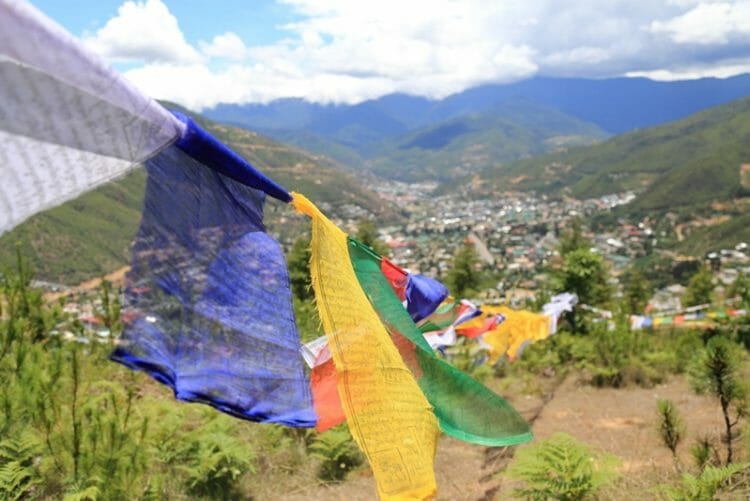Always dreamed about traveling to Bhutan? Read on for practical Bhutan travel tips and advice!
It’s been more than a week since I left Bhutan, and I’m still in disbelief that I was able to finally make it there to see “The Last Shangri-La” with my own eyes.
This magical land is a prime example of how to show off the best of what the country has to offer while balancing local development and sustainability in every way. If you are looking to visit a country that hasn’t been completely overrun with tourists, then you need to add Bhutan to your bucket list. I can wholeheartedly say that it is entirely different from any other country I’ve ever traveled to.
Though the country has been open for tourism for more than 40 years, planning a trip to Bhutan can be extremely daunting and overwhelming, so much so that many people give up altogether because they’re not sure where to start. When I told people I was going to Bhutan, I was bombarded with questions by friends and family: how do you even get there? Isn’t it super expensive? Don’t you need to go with a tour group? What is there to see and do in Bhutan? What are the best places to visit in Bhutan? Is Bhutan worth visiting?
History and location of Bhutan

The Kingdom of Bhutan is a small country located in the eastern Himalayas with India to its south and sharing a border with China in the north. It’s about 240 KM wide and 200 KM tall – tiny! Its population comes in at approximately 800,000 people, the vast majority of which practices Buddhism. The country is also known as “Druk Yul”, or “Land of the Thunder Dragon”, a creature from Bhutanese mythology.
Its landscape is extremely diverse and ranges from subtropical plains in the valleys to national parks and forests as well as snowcapped mountain ranges. One of the world’s most difficult treks, the Snowman Trek, takes place across the mountains in the north and takes nearly a month to complete!
Though it is small, it packs a powerful punch and has managed to preserve its rich culture and traditions while growing and assimilating new technology. It has also never been colonized and maintained complete sovereignty throughout history – it was formally consolidated and became a nation state in 1616, and its first King was crowned in 1907. The King leads state affairs in Bhutan, whereas the Chief Abbott (leader of the monastic body) oversees religious and spiritual affairs.

Bhutan is also sometimes referred to as the “Happiest Country in the World” because it was the first country in the world to measure progress based on happiness. The 4th King coined the term, Gross National Happiness, at a time when the rest of the world was primarily focused on economic growth.
Gross National Happiness is not a guarantee of happiness, but the government in Bhutan has made it a national priority to create the right conditions for its citizens to pursue happiness and achieve a balance between economic, physical, emotional, and psychological wellbeing. Each year, a commission conducts a poll with the people of Bhutan and measures nine different domains: living standards, education, health, cultural diversity and resilience, community vitality, time use, psychological wellbeing, ecological diversity and good governess.
